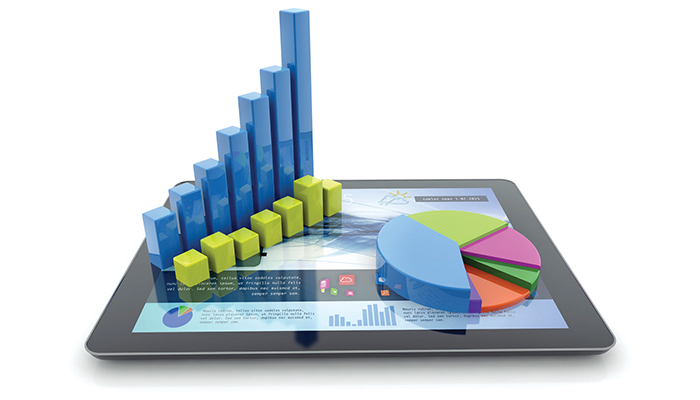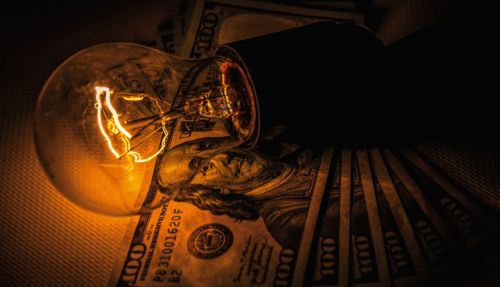All
Using Financial Data to Control Costs
by Joe Ciccarello, CPA, MST and Jeff Foley, CPA, Gray, Gray & Gray

Gaining the upper hand on your costs can sometimes seem like an overwhelming task. But by applying some common sense “best practices” to the way you collect, measure and apply the financial data found in your company’s books, you actually have an opportunity to reduce unnecessary costs and improve efficiency, which can lead to enhanced profitability.
The retail energy business has become more complex, so the need to pay closer attention to costs has grown. Cost control is an increasingly vital function that incorporates various methods and management techniques with the goal of reducing costs (or at least limiting their growth). By adhering to the proven adage, “You can only manage what you measure,” cost control methods use financial data to monitor and evaluate the performance of specific departments (such as product delivery, service and administration) and people (managers, department heads) with the overall goal of improving efficiency throughout the company.
Start with the Budget
The cost control process begins by looking forward, with the development of an annual budget. While not a new concept, looking at the budget in terms of controlling costs may shine a new light on how it is structured and managed.
The budget should incorporate all projected financial activities, include anticipated sources of revenue and expected costs and expenses. A budget can be built on the shoulders of previous budgets, with adjustments made in light of changes to the business and the market. But it is not good enough to just roll forward the previous year’s income statement and call it a budget.
The budget process should start with a meeting with the management team and your accountant to forecast the next year. Changes that have taken place in the market and at the company need to be addressed. Does the business have new commitments and requirements that need to be added to the budget? Have financial covenants been put in place by the bank, which must be met if the company wants to remain in good standing? Has an acquisition added to the company’s debt service?
All expenses should be reviewed in order to make sure they are in line with industry norms and standards. You can’t go by last year’s numbers for an objective analysis, but need to access industry figures for companies of similar size. Your CPA should be able to help find the information and make the comparison.
This detailed budget becomes the basis upon which actual financial results will be measured and compared against projections.
Measure, Evaluate, Adjust
With a budget set as the standard against which all things are measured, the next step is to define what will be measured, how often, and by whom. Our recommendation is that you produce control reports on a monthly basis, with a more extensive review report produced quarterly. This frequency gives management time to assess and react to information, making adjustments to processes, procedures or personnel as necessary to keep costs in line with projections. Ideally, the changes can be made before the next control report so that the effect of adjustments can be evaluated.
These reports are prepared by an internal accounting department or outside accounting firm, and include the information necessary to detect and quantify variations from the expected path as outlined in the annual budget. A good control report highlights significant information by focusing management’s attention on those items in which actual performance significantly differs from the standard.
At the close of a month, management compares the actual results from that month to the standard costs outlined in the budget, in order to determine the degree and direction of any variance. The purpose of analyzing variances is to identify areas where costs need containment.
As an example let’s look at the fuel delivery department. If product acquisition is budgeted to be $1.50 per gallon, delivery costs (drivers, dispatchers, vehicle expense, marketing, etc.) is anticipated to be $0.50 per gallon, and the target margin is $0.60 per gallon, the selling cost per gallon would be $2.60. With sales of 100,000 gallons during the month, the gross revenue generated by the fuel delivery department would be $260,000, producing a profit of $60,000.
Reviewing the control report for the month, these are the numbers management should expect to see. If, however, the profit generated falls significantly below the $60,000 level, it should be a “red flag” that triggers a closer examination. Did product acquisition costs exceed the expected $1.50 per gallon? Did overhead costs go over budget? Was there an excess of overtime paid to drivers? Knowing that a problem exists—in close to real time—is the first step on the road to correcting it.
Managers and Profit Centers
Each department within the company should be treated as its own profit center. Management should know exactly how much each department is contributing to the bottom line. Or, conversely, how much of a drain an underperforming department is on profitability.
Managers in the company need to be made aware of cost control measures, and the fact that their performance will be measured and rated based on their ability to “hit the mark” on the numbers. Managers should be made to understand that they have more control over expenses than they do over revenue, so their contribution to improved profitability comes from keeping costs in line.
An important trend in cost control has been shifting some of the cost control responsibility to managers who have the most knowledge of and influence over how their departments spend money. This practice is intended to promote “bottom-up” cost control measures and encourage acceptance of cost management strategies throughout the company.
Analysis Is Only as Good as the Data
Accurate and timely information is essential for effective cost control efforts. Detailed cost data allows management to understand how funds have been spent in the past and how they are being spent now. Having a detailed accounting system is, therefore, a prerequisite for controlling costs. The more a cost control report can “drill down” to the details, the more value the information will have for managing costs.
For example, an important measurement is breakeven analysis—how much you need to make to cover costs. The breakeven point can help managers decide if they should reduce prices, give a discount, or accept that installation job for less margin. But breaking even is not the goal. No business can break even and hope to remain in business. Therefore, your projections must include a reasonable profit plus a compensation figure for the owner.
Not all cost variations can be attributed to internal actions. When analyzing control reports, consideration must be given to external forces that affect costs. Price spikes, weather variations, general economic conditions—all can play a role in both revenue production, as well as have an impact on costs.
Summary
Cost control measures, applied on a continuous and consistent basis, identify potential problems early enough so that detrimental activities can be corrected before they become expensive problems. By basing corrective action on objective data, not intuition, management can compare actual performance to predetermined standards, and take the appropriate action to correct variances and keep the company on a straighter path to reaching financial goals.
Joe Ciccarello, CPA, MST and Jeff Foley, CPA are partners at Gray, Gray & Gray Certified Public Accountants, Canton, Mass. (www.gggcpas.com), which has been providing accounting, tax and business advisory services to energy companies for more than 70 years.
Related Posts
 8 Strategies for Effective Wealth Transfer in a Business Succession
8 Strategies for Effective Wealth Transfer in a Business Succession
Posted on June 16, 2025
 What Do Drivers and Technicians Want?
What Do Drivers and Technicians Want?
Posted on May 14, 2025
 Long-Term Demand and Equipment Investments
Long-Term Demand and Equipment Investments
Posted on May 13, 2025
 Show Me the Money
Show Me the Money
Posted on April 28, 2025
Enter your email to receive important news and article updates.
